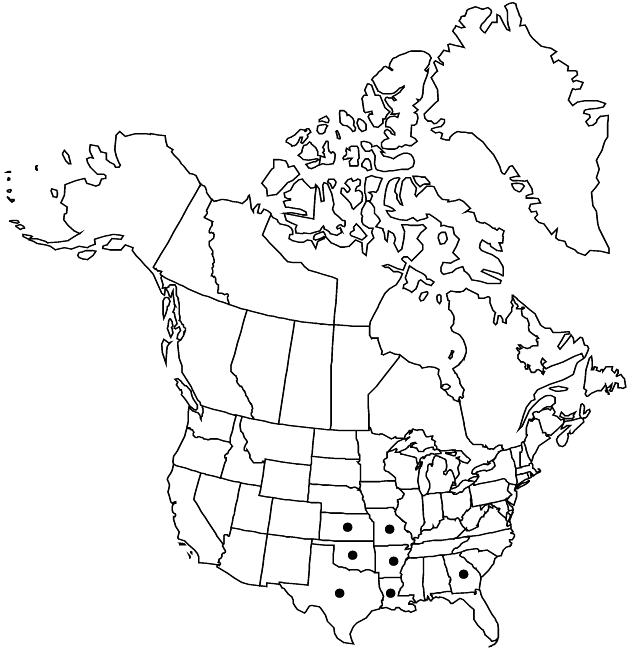Krigia occidentalis
J. Acad. Nat. Sci. Philadelphia 7: 104. 1834.
Annuals, 4–16 cm; taprooted. Stems 1–20+, ± scapiform, erect, eglandular or lightly glandular-villous. Leaves basal (rosettes) and proximally cauline (on scarcely elongated branches close to ground); petiolate (petioles sometimes ciliate-glandular); blades linear, oblanceolate, or obovate, 1–7 cm, margins entire or sparingly lobed, lobes linear or triangular to rounded, apices acute or obtuse, faces eglandular. Heads borne singly. Peduncles from basal rosettes. Involucres 2.5–6.5 mm. Phyllaries 4–7, erect in fruit, lanceolate in flower, becoming ovatelanceolate in fruit, midveins and sometimes secondary-veins becoming prominent in fruit, curving inward at bases to form keels, apices acute. Florets 5–25; corollas yellow, 5–9 mm. Cypselae reddish-brown, broadly obconic, 1.2–1.8 mm (apical areas broader than basal areoles), 10–15-ribbed; pappi of 5, hyaline, rounded outer scales 0.4–0.6 mm plus usually 5, sometimes 0, scabrous inner bristles 1.2–2 mm. 2n = 12.
Phenology: Flowering Mar–Jun.
Habitat: Sandy or clay soils, meadows, prairies, edges of open oak-hickory and pine woods
Elevation: 10–400 m
Distribution

Ark., Ga., Kans., La., Mo., Okla., Tex.
Discussion
Krigia occidentalis grows in the Eastern deciduous forest biome, tallgrass prairie, and mixedgrass prairie. It has superficial similarity in pappus form to K. virginica; it was consistently placed as the sister species to K. cespitosa in chloroplast cpDNA and nuclear rDNA studies by K. J. Kim et al. (1992b, 1992c). In morphology, it is most similar to the polyploid species K. wrightii, with 2n = 18.
Selected References
None.
Lower Taxa
"fine" is not a number.